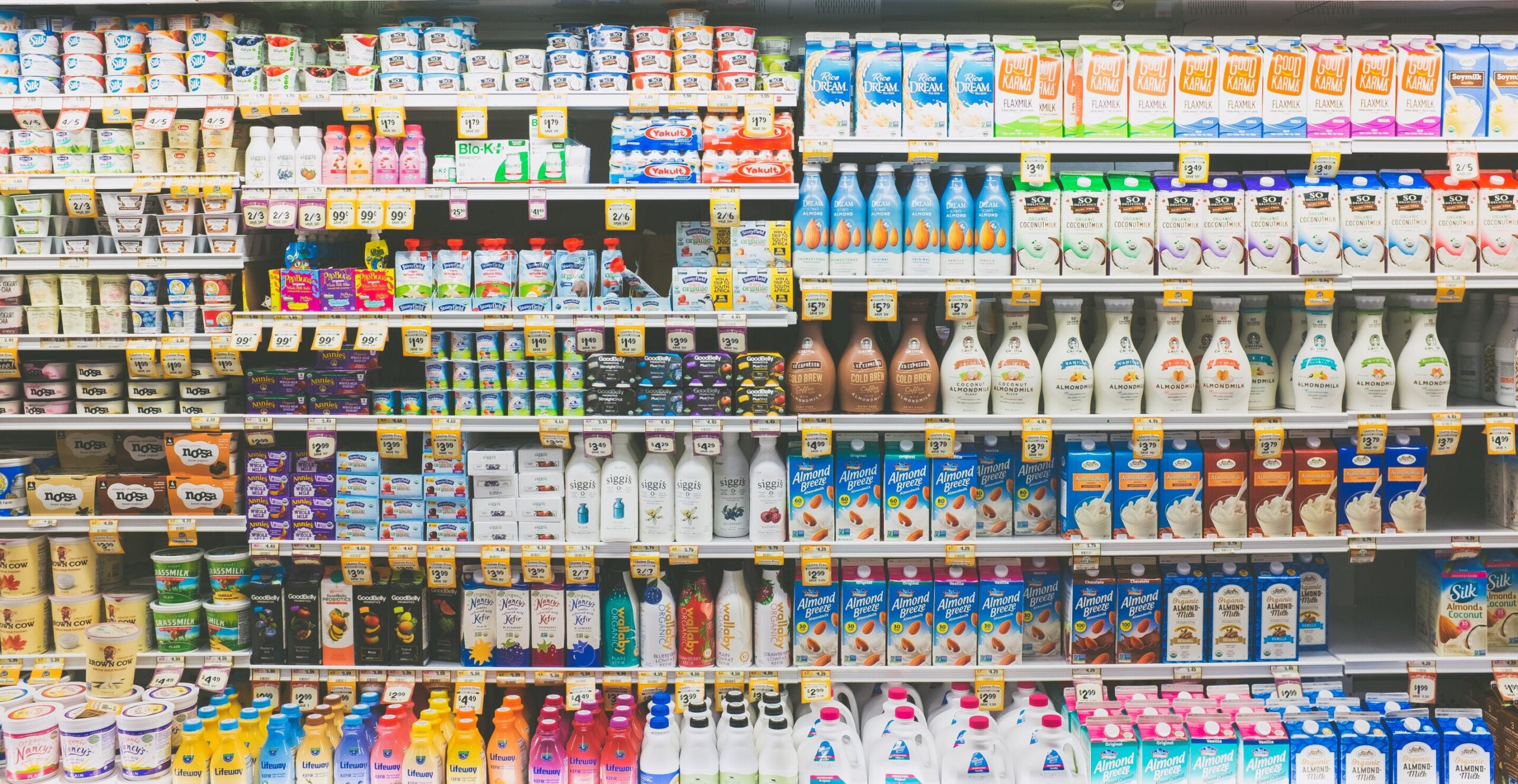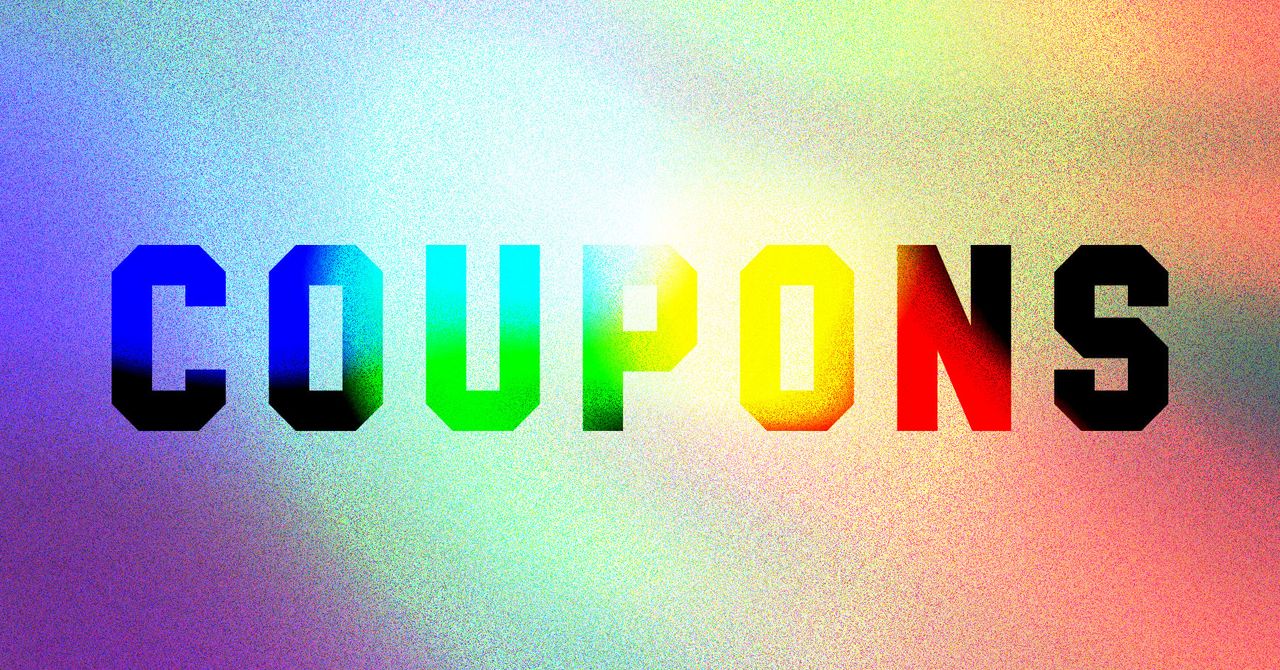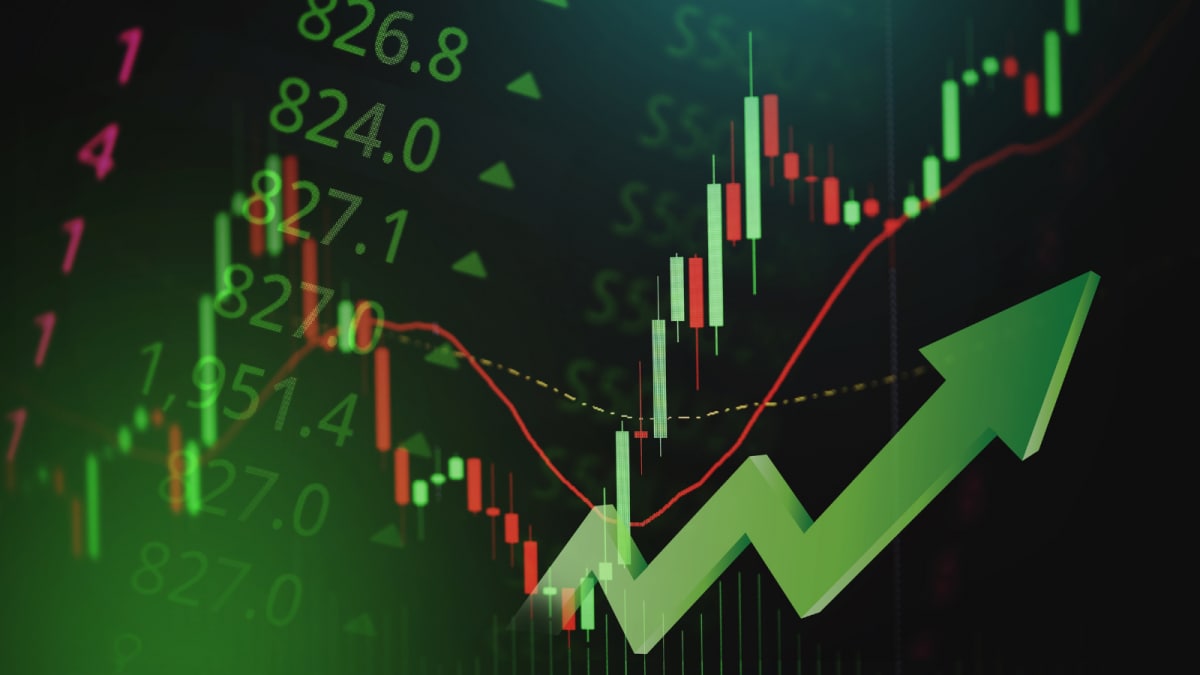Tech
Inside the fight over the recycling label on milk cartons

A battle has been waging in Sacramento over whether beverage cartons—the ones used for milk, juice, broth, wine, even egg whites—should get the coveted chasing arrows recycling label.
Earlier this year, the state agency in charge of recycling, CalRecycle, determined the cartons were probably not eligible, because they weren’t being sorted and recycled by the vast majority of the state’s waste haulers, a requirement of the state’s “Truth in Recycling” law, Senate Bill 54.
Three months later, the agency reversed course.
The label is critical for product and packaging companies to keep selling in California as the state’s single-use packaging law goes fully into effect. It calls for all single-use packaging products to be recyclable or compostable by 2032. If they’re not, they can’t be sold or distributed in the state.
According to internal agency emails, documents and industry news releases, the change was prompted by data from the carton packaging industry’s trade group, the Carton Council of North America. The council had also announced it was investing in a carton recycling facility in Lodi.
The waste agency’s reversal incensed several waste experts, anti-plastic activists and environmentalists, who say cartons have limited, if any, value or recycling potential. They say the new industry-backed facility in Lodi is nothing more than a facade—one of several similar operations that have failed across the country. CalRecycle’s revised determination about the recyclability of the material, they say, is based on flawed methods that are easy to exploit.
Some say it’s just the latest example of Gov. Gavin Newsom and CalRecycle retreating from the state’s landmark single-use plastic law, and other ambitious anti-waste and anti-plastic laws that he and the waste agency once touted.
“The big picture here is that the governor and CalRecycle are creating loopholes,” said Jan Dell, a chemical engineer and founder of Last Beach Cleanup, an anti-plastic organization.
“What we’ve got here is this Kingdom of California that wants to tell the world that ‘we’re the best in recycling, that recycling works, that we’re going to lead the way in recycling and build a circular economy.’ But, the reality on the ground is that this stuff’s not recyclable. It just isn’t.”
Yet others say what’s happened with carton material is exactly what the laws were designed to do: motivate plastic and packaging companies to make their packaging recyclable, or develop technologies and markets that will.
“We are gratified to see the Carton Council making these investments and demonstrating that recycling can work with a sincere commitment from industry,” said Sen. Ben Allen (D-Santa Monica), who authored both California’s truth in labeling and single-use plastic laws.
“For decades, Californians have been misled into believing that the tons of packaging we consume can be cleanly and effectively recycled if only we put it into the blue bin. Sadly, that is too often untrue.”
Melanie Turner, a CalRecycle spokeswoman, said the agency does not decide what products can get the recycling label; that is a decision made by the manufacturer. The agency’s role is to provide information to the manufacturer about the recyclability of the product in California.
The chasing arrows label has not only become increasingly important as the state’s single-use plastic law comes into effect, but it also provides comfort to consumers who are trying to minimize their environmental footprint.
Although at first glance most milk cartons appear to be primarily made of paper, they are actually comprised of alternating layers of paper, plastic and sometimes aluminum—a laminated sandwich of materials that extends a product’s shelf life, but also makes it hard to recycle.
The material is a challenge for commercial and residential waste haulers, said Robert Reed, a spokesman for Recology, a large waste hauling company in the Bay Area, Northern California, Oregon and Washington.
Not only are there few buyers for the milk-sodden cartons themselves (data show they currently fetch $0 in the recycling market), they risk contaminating other valuable items. For example, if more than 2% of a bale of mixed paper contains cartons, the bale is considered worthless.
In 2024, more than 106,000 tons (220 million pounds) of the old milk, juice and broth containers were dumped in landfills.
According to the Carton Council of North America, there are five facilities in North America that take cartons and try to give them new life. Four of them, in Wisconsin, Alabama, Canada, and Mexico, say they can harvest the paper fibers out of the containers and resell them to tissue and toilet paper manufacturers. All are more than 2,000 miles from downtown Los Angeles.
The fifth, a facility based in Waterbury, Connecticut, chops the blended material up, heats it so the plastic layer melts and turns into an adhesive, then presses it between two layers of fire-resistant material to create a gypsum-like roofing material.
It’s not clear if any of these facilities are paying for used cartons from waste operators, or taking them for free. None of the companies that operate these facilities responded to requests from The Times.
The carton council has announced it is investing in two new facilities (including the one in Lodi) where soiled cartons will be turned into roofing material.
But similar operations have either failed in the past, or never materialized. In 2022, the nationwide garbage operator Waste Management invested in a carton-to-roofing-material facility in Des Moines, Iowa. Two years later, it shut down with no explanation. Similar facilities in Colorado and Pennsylvania that were touted in news releases never materialized.
Waste Management did not respond to requests for comment.
In February, a consortium called ReCB, made up of the carton council and two corporate partners, purchased the abandoned Des Moines plant. According to Jan Rayman, ReCB managing director, the facility has been running 24/7 since June.
The two other partners include Elof Hansson U.S., a global trading company, and the Upcycling Group, a construction material production company co-founded by Rayman.
“We don’t use any glues or chemicals during the process. We don’t use any water in our manufacturing process. So we basically borrow the properties of the carton, and convert this composite package into a high-performance composite-building material,” he said.
He said the facility in Iowa pays for used cartons, rather than accepting them for free, indicating they have some value, a key point for the industry in establishing recyclability. Yet regional data from RecyclingMarkets.net shows the material’s value in the Midwest at $0 since January. There is no indication in regional data going back to 2013 that anyone will pay for used cartons.
A showcase facility
The consortium’s Lodi facility is in a rented warehouse on the northern edge of the city, not yet operating. Rayman said it is waiting on permits from the city.
On a recent weekday afternoon, it contained two new, bright blue state-of-the-art processing lines imported from the Czech Republic. They’ll be used to chop, heat and press the cartons. On the floor nearby, a bale of old milk, juice and soup cartons was attracting flies.
According to the carton council, when the facility is fully operational, it will be able to process 9,000 tons of cartons per year—or about 8.4% of what currently goes to state landfills every year. Rayman said that’s just the beginning; it will scale up as demand for his roofing product increases.
But even if it does, which Dell and others doubt, considering the track record of past operations, it’s the way that CalRecycle granted the recycling label that she says is most problematic.
Under California law, CalRecycle is supposed to find out whether the state’s waste operators are sorting a material at waste facilities. If they’re doing so for less than 60% of the state’s population, the material isn’t eligible for a recycling label.
In April, CalRecycle determined that only 47% of the state’s population, across 16 counties, had access to facilities that accepted cartons for recycling and sorted them out of the waste stream.
The state considers people to have access if a single waste hauler in their county accepts a material for recycling.
In other words, according to CalRecycle’s methodology, if one of Los Angeles’ 17 mechanical recycling facilities separates out food and beverage cartons, the county’s entire 9.8 million population—or nearly 25% of the state’s population—is served.
“It’s like saying that because you have air conditioning in one of L.A.’s 1,000 or more schools, then all the schools are air-conditioned,” said Dell. “It doesn’t make sense,” Dell said.
In fact, the state’s own Recycling and Disposal Reporting System shows that only one of the state’s 74 waste sorting operations sends carton bales off for recycling.
The state estimate of 47% meant the cartons were ineligible for the recycling label.
In the weeks that followed, however, the carton council provided the agency with new data, indicating that more than 70% of Californians, across 23 counties, have access. That higher percentage came in part from recycling operations that received new sorting machinery, called optical sorters, from the carton council.
“The endorsement or promotion of false recycling labels drives up costs for consumers because it ultimately leads to more contamination in curbside bins,” said Susan Keefe, the Southern California director for Beyond Plastics, an anti-plastic group based in Bennington, Vermont.
“Granting an unearned, false recycling label to the carton packaging companies disrespects California taxpayers, who have seen their recycling costs continue to climb year after year due to contamination and false promises of recyclability.”
2025 Los Angeles Times. Distributed by Tribune Content Agency, LLC.
Citation:
Inside the fight over the recycling label on milk cartons (2025, September 2)
retrieved 2 September 2025
from https://techxplore.com/news/2025-09-recycling-cartons.html
This document is subject to copyright. Apart from any fair dealing for the purpose of private study or research, no
part may be reproduced without the written permission. The content is provided for information purposes only.
Tech
Top Nomad Goods Promo Codes: Get 25% Off in December 2025

At WIRED, we recommend a bunch of Nomad accessories for a variety of gadgets, such as your smartphone, tablet, earbuds, and smartwatch. But it can get expensive—it’s the price you pay for luxury. If you’ve been holding out for a sale, you’re in luck. The company is currently offering discounts on a variety of items, including iPhone cases, iPad cases, wireless chargers, and more. Right now, you can get up to 80% off by using the links above. You’ll find a lot of the accessories on sale in our Best iPhone 16 Cases guide, Best Apple 3-in-1 Wireless Chargers guide, Best Apple Watch Accessories guide, and Best iPad Accessories guide.
Save up to 80% Off at the Nomad Goods Sale Section
Get up to 80% off accessories in the outlet section on numerous items, including cases (for the iPhone, iPad, and AirPods), cables, wireless chargers, and more. It’s important to note the exact discount or Nomad Goods coupon varies depending on the specific accessory.
Best Deals for Nomad Cases, Nomad Apple Watch Bands, and More
A bunch of Nomad’s accessories are on sale, but there are a few deals that stick out—specifically on WIRED-approved items. Some of these include the Traditional Leather Case and Rugged Case for the iPhone 16, Nomad Universal Cable (USB-C to USB-C), the Modern Leather Case for the AirPods Pro (2nd Gen), and the Modern Leather Case for the iPad Pro. More of our recommendations that are on sale include the Passport Wallet, along with the Nomad Rugged 45-mm Case and Sport Band for the Apple Watch.
Nomad iPhone Cases: 25% Off
Nomad has tons of accessories to level up your iPhone. After all, it’s the object you use most, why not make sure it’s protected (and stylish)? Nomad has some of our favorite iPhone 17 cases in an expansive line that includes favorites like the Rugged Case, Modern Leather Case, and Magnetic Leather Back. Be sure to check out their offerings so that you don’t have to live with a cracked screen.
Nomad Goods iPhone 16 Cases: 25% Off
Nomad makes tons of really solid iPhone accessories, including their full line of iPhone 16 cases, which have a versatile range of styles and materials, all made to last for years. Some of our favorite Nomad iPhone 16 cases include the Nomad Rugged Case and the Nomad Modern Leather Case, two classic styles that you can take anywhere (and put through virtually everything).
Other Ways to Save With or Without a Nomad Coupon
If you’re looking for additional savings, Nomad also offers the option to apply for its ambassador program. As part of the program, you’ll be responsible for creating content and driving sales through your affiliate link. When you first sign up, you’ll receive a one-time Nomad discount code for 15% off products. You’ll also have the opportunity to receive additional codes and free products while participating as an ambassador. For more savings, Nomad free shipping is available for orders in the US that are $75 and over.
Tech
BMW Is Betting Big on the New iX3. The Good News Is It’s Superb

BMW’s first car on its new EV platform has finally arrived. But will a big range, thumping charging tech, and a new driving brain that aims to deliver the ultimate ride be enough to beat China?
Source link
Tech
MIT engineers design an aerial microrobot that can fly as fast as a bumblebee

In the future, tiny flying robots could be deployed to aid in the search for survivors trapped beneath the rubble after a devastating earthquake. Like real insects, these robots could flit through tight spaces larger robots can’t reach, while simultaneously dodging stationary obstacles and pieces of falling rubble.
So far, aerial microrobots have only been able to fly slowly along smooth trajectories, far from the swift, agile flight of real insects — until now.
MIT researchers have demonstrated aerial microrobots that can fly with speed and agility that is comparable to their biological counterparts. A collaborative team designed a new AI-based controller for the robotic bug that enabled it to follow gymnastic flight paths, such as executing continuous body flips.
With a two-part control scheme that combines high performance with computational efficiency, the robot’s speed and acceleration increased by about 450 percent and 250 percent, respectively, compared to the researchers’ best previous demonstrations.
The speedy robot was agile enough to complete 10 consecutive somersaults in 11 seconds, even when wind disturbances threatened to push it off course.
Credit: Courtesy of the Soft and Micro Robotics Laboratory
“We want to be able to use these robots in scenarios that more traditional quad copter robots would have trouble flying into, but that insects could navigate. Now, with our bioinspired control framework, the flight performance of our robot is comparable to insects in terms of speed, acceleration, and the pitching angle. This is quite an exciting step toward that future goal,” says Kevin Chen, an associate professor in the Department of Electrical Engineering and Computer Science (EECS), head of the Soft and Micro Robotics Laboratory within the Research Laboratory of Electronics (RLE), and co-senior author of a paper on the robot.
Chen is joined on the paper by co-lead authors Yi-Hsuan Hsiao, an EECS MIT graduate student; Andrea Tagliabue PhD ’24; and Owen Matteson, a graduate student in the Department of Aeronautics and Astronautics (AeroAstro); as well as EECS graduate student Suhan Kim; Tong Zhao MEng ’23; and co-senior author Jonathan P. How, the Ford Professor of Engineering in the Department of Aeronautics and Astronautics and a principal investigator in the Laboratory for Information and Decision Systems (LIDS). The research appears today in Science Advances.
An AI controller
Chen’s group has been building robotic insects for more than five years.
They recently developed a more durable version of their tiny robot, a microcassette-sized device that weighs less than a paperclip. The new version utilizes larger, flapping wings that enable more agile movements. They are powered by a set of squishy artificial muscles that flap the wings at an extremely fast rate.
But the controller — the “brain” of the robot that determines its position and tells it where to fly — was hand-tuned by a human, limiting the robot’s performance.
For the robot to fly quickly and aggressively like a real insect, it needed a more robust controller that could account for uncertainty and perform complex optimizations quickly.
Such a controller would be too computationally intensive to be deployed in real time, especially with the complicated aerodynamics of the lightweight robot.
To overcome this challenge, Chen’s group joined forces with How’s team and, together, they crafted a two-step, AI-driven control scheme that provides the robustness necessary for complex, rapid maneuvers, and the computational efficiency needed for real-time deployment.
“The hardware advances pushed the controller so there was more we could do on the software side, but at the same time, as the controller developed, there was more they could do with the hardware. As Kevin’s team demonstrates new capabilities, we demonstrate that we can utilize them,” How says.
For the first step, the team built what is known as a model-predictive controller. This type of powerful controller uses a dynamic, mathematical model to predict the behavior of the robot and plan the optimal series of actions to safely follow a trajectory.
While computationally intensive, it can plan challenging maneuvers like aerial somersaults, rapid turns, and aggressive body tilting. This high-performance planner is also designed to consider constraints on the force and torque the robot could apply, which is essential for avoiding collisions.
For instance, to perform multiple flips in a row, the robot would need to decelerate in such a way that its initial conditions are exactly right for doing the flip again.
“If small errors creep in, and you try to repeat that flip 10 times with those small errors, the robot will just crash. We need to have robust flight control,” How says.
They use this expert planner to train a “policy” based on a deep-learning model, to control the robot in real time, through a process called imitation learning. A policy is the robot’s decision-making engine, which tells the robot where and how to fly.
Essentially, the imitation-learning process compresses the powerful controller into a computationally efficient AI model that can run very fast.
The key was having a smart way to create just enough training data, which would teach the policy everything it needs to know for aggressive maneuvers.
“The robust training method is the secret sauce of this technique,” How explains.
The AI-driven policy takes robot positions as inputs and outputs control commands in real time, such as thrust force and torques.
Insect-like performance
In their experiments, this two-step approach enabled the insect-scale robot to fly 447 percent faster while exhibiting a 255 percent increase in acceleration. The robot was able to complete 10 somersaults in 11 seconds, and the tiny robot never strayed more than 4 or 5 centimeters off its planned trajectory.
“This work demonstrates that soft and microrobots, traditionally limited in speed, can now leverage advanced control algorithms to achieve agility approaching that of natural insects and larger robots, opening up new opportunities for multimodal locomotion,” says Hsiao.
The researchers were also able to demonstrate saccade movement, which occurs when insects pitch very aggressively, fly rapidly to a certain position, and then pitch the other way to stop. This rapid acceleration and deceleration help insects localize themselves and see clearly.
“This bio-mimicking flight behavior could help us in the future when we start putting cameras and sensors on board the robot,” Chen says.
Adding sensors and cameras so the microrobots can fly outdoors, without being attached to a complex motion capture system, will be a major area of future work.
The researchers also want to study how onboard sensors could help the robots avoid colliding with one another or coordinate navigation.
“For the micro-robotics community, I hope this paper signals a paradigm shift by showing that we can develop a new control architecture that is high-performing and efficient at the same time,” says Chen.
“This work is especially impressive because these robots still perform precise flips and fast turns despite the large uncertainties that come from relatively large fabrication tolerances in small-scale manufacturing, wind gusts of more than 1 meter per second, and even its power tether wrapping around the robot as it performs repeated flips,” says Sarah Bergbreiter, a professor of mechanical engineering at Carnegie Mellon University, who was not involved with this work.
“Although the controller currently runs on an external computer rather than onboard the robot, the authors demonstrate that similar, but less precise, control policies may be feasible even with the more limited computation available on an insect-scale robot. This is exciting because it points toward future insect-scale robots with agility approaching that of their biological counterparts,” she adds.
This research is funded, in part, by the National Science Foundation (NSF), the Office of Naval Research, Air Force Office of Scientific Research, MathWorks, and the Zakhartchenko Fellowship.
-

 Tech4 days ago
Tech4 days agoGet Your Steps In From Your Home Office With This Walking Pad—On Sale This Week
-

 Sports3 days ago
Sports3 days agoIndia Triumphs Over South Africa in First ODI Thanks to Kohli’s Heroics – SUCH TV
-

 Entertainment3 days ago
Entertainment3 days agoSadie Sink talks about the future of Max in ‘Stranger Things’
-

 Fashion3 days ago
Fashion3 days agoResults are in: US Black Friday store visits down, e-visits up, apparel shines
-

 Politics3 days ago
Politics3 days agoElon Musk reveals partner’s half-Indian roots, son’s middle name ‘Sekhar’
-

 Tech3 days ago
Tech3 days agoPrague’s City Center Sparkles, Buzzes, and Burns at the Signal Festival
-
Uncategorized1 week ago
[CinePlex360] Please moderate: “Americans would
-

 Tech1 week ago
Tech1 week agoWake Up—the Best Black Friday Mattress Sales Are Here


















